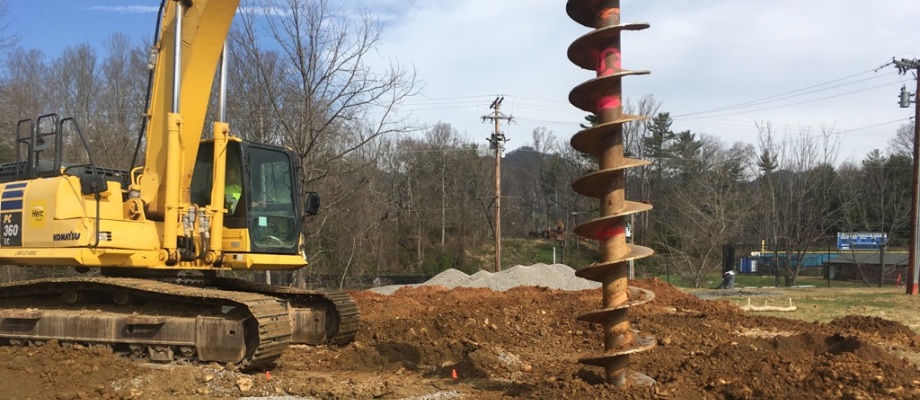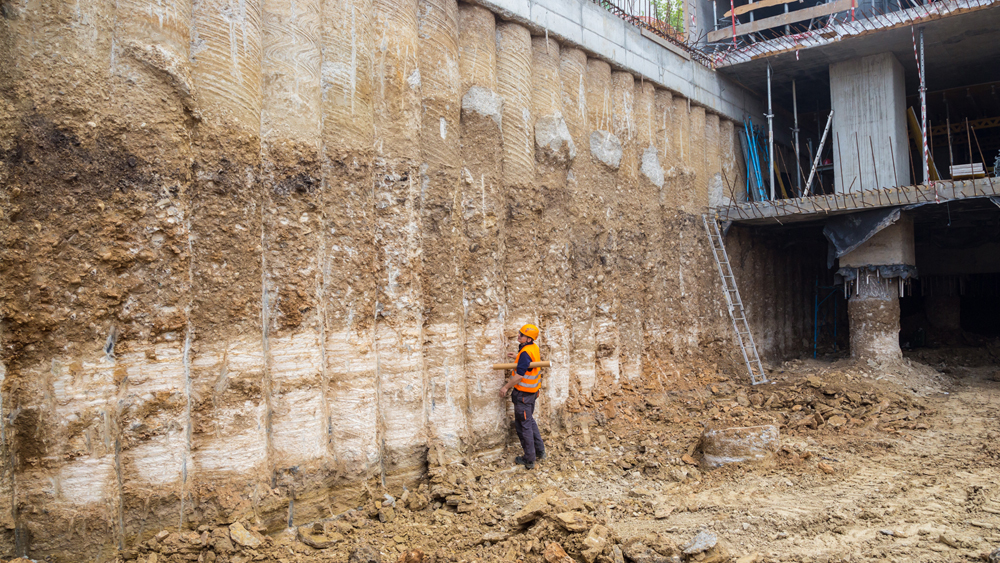Specialist Consulting Engineer Providers for Cutting-edge Framework Solutions
Wiki Article
Understanding the Necessary Role of the Geotechnical Industry in Modern Construction Projects and Framework Development
The geotechnical industry is a cornerstone of modern-day building and framework development, supplying essential understandings right into soil habits that straight affect job results. With innovative dirt assessments and innovative engineering remedies, geotechnical professionals not just guarantee architectural stability however likewise address sustainability concerns amidst progressing environmental requirements.Significance of Dirt Assessment
Soil evaluation plays an important role in the geotechnical sector, functioning as the foundation for notified decision-making in construction projects. Accurate soil assessment is important for determining the suitability of a site for numerous kinds of frameworks, including property homes, business structures, and bridges. By evaluating dirt make-up, density, toughness, and dampness material, designers can expect possible challenges and alleviate risks linked with ground instability, erosion, and negotiation.The evaluation procedure generally includes a series of examinations and monitorings that offer crucial details about the subsurface problems. This data educates the style and building and construction procedures, guaranteeing that structures are improved strong ground with ample assistance. Understanding the soil account enables designers to pick ideal building methods and products, enhancing source application and minimizing costs.
In enhancement to guaranteeing structural stability, dirt analysis contributes to environmental sustainability. By determining possible contamination or unfavorable results on surrounding communities, engineers can carry out strategies to protect these natural deposits. In general, comprehensive soil analysis is crucial in the geotechnical field, underpinning the safety and security, efficiency, and ecological responsibility of building and construction projects.
Key Geotechnical Methods
A variety of key geotechnical techniques are used to boost the stability and examine and performance of construction websites. One fundamental approach is soil sampling and screening, which permits engineers to identify the physical and chemical residential or commercial properties of the ground. This info is vital for making notified choices concerning foundation style and building approaches.Another necessary technique is site characterization, which involves the thorough evaluation of dirt and rock conditions via approaches such as borehole drilling and in-situ screening. Techniques like Criterion Infiltration Tests (SPT) and Cone Infiltration Tests (CPT) provide important information on soil toughness and stratigraphy.
Ground renovation techniques, such as dirt stablizing and grouting, are likewise vital in boosting the load-bearing capability of weak soils. These approaches can minimize settlement and improve overall site conditions.
Furthermore, incline stability evaluation is essential for identifying prospective landslide threats and ensuring the security of excavations. This analysis commonly employs numerical modeling and limitation equilibrium techniques to forecast soil habits under numerous problems.
Including these geotechnical techniques into building preparation not just enhances job outcomes yet also makes certain the long-term sustainability of facilities growth.
Effect On Construction Safety

In addition, reliable geotechnical design entails executing reduction techniques for determined dangers. This may consist of dirt stablizing strategies, retaining structures, or drainage systems to reduce hydrostatic stress. By resolving these elements, construction teams can minimize the likelihood of mishaps and boost employee security.
In addition, continuous tracking of site problems is critical throughout building. Geotechnical tools can supply real-time information relating to ground activity and stability, permitting timely treatments when needed.
Essentially, the geotechnical click for source industry plays a critical role in guarding building and construction jobs. By focusing on ground integrity and employing strenuous analysis methods, the geotechnical field not only safeguards the workforce but additionally adds to the long life and reliability of built framework.
Sustainability in Geotechnical Practices

In addition, geotechnical designers are currently using sophisticated innovations, such as geosynthetics, which boost dirt stability while reducing the quantity of material required. This not just saves resources however additionally causes less waste generation (consulting engineer). The assimilation of sustainable design concepts right into geotechnical design urges using renewable power resources in construction procedures, further reducing carbon emissions
By carrying out these analyses, geotechnical experts can create approaches that mitigate adverse impacts, guaranteeing conformity with environmental policies. On the whole, the emphasis on sustainability within geotechnical methods not just adds to the durability and strength of facilities yet additionally promotes a responsible technique to land and resource management.
Future Trends in Geotechnical Engineering
Innovation is driving the future of geotechnical design, as emerging techniques and technologies reshape the industry. The assimilation of advanced data analytics and fabricated knowledge is set to revolutionize website examination and danger assessment, enabling engineers to make more enlightened choices based on real-time data. The use of geosynthetic products is obtaining grip, supplying lasting options that boost dirt security and reduce ecological effect - tailings engineer.Another significant pattern is the adoption of automated and robotic systems for surveillance and building and construction processes. These modern technologies not just improve precision but additionally boost safety by minimizing human involvement in harmful environments. In addition, the implementation of Structure Info Modeling (BIM) in geotechnical layout assists in improved partnership amongst stakeholders, enhancing task shipment and decreasing prices.
As climate modification presents brand-new challenges, the why not look here market is significantly concentrating on resilience and flexibility in design methods, ensuring infrastructure can withstand extreme weather events. The ongoing fad towards sustainability will drive development in environment-friendly products and methods, lining up geotechnical design with wider ecological objectives. Collectively, these fads will certainly shape a much more efficient, lasting, check this site out and resistant geotechnical landscape for future jobs.
Final Thought

The geotechnical sector is a cornerstone of modern-day building and framework development, giving critical understandings into soil habits that directly influence job outcomes. tailings engineer.Dirt assessment plays a crucial function in the geotechnical market, serving as the foundation for informed decision-making in building projects. Overall, comprehensive dirt evaluation is important in the geotechnical field, underpinning the safety, performance, and ecological obligation of construction projects
Building security is considerably affected by geotechnical practices, as the security and stability of the ground directly impact the general security of a building and construction website.In conclusion, the geotechnical industry is vital in contemporary building and construction and facilities growth, giving critical analyses that ensure architectural honesty and security.
Report this wiki page